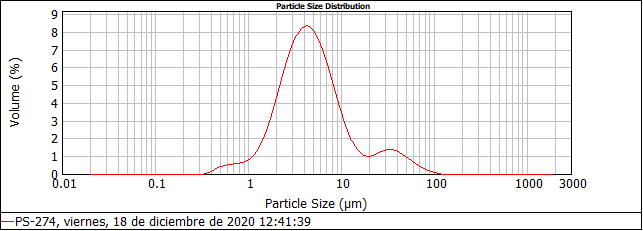Wide Angle Static and Laser Diffraction
Structural & Morphology Characterization (Dispersed-phases characterisation)
The laser diffraction for the determination of particle size distribution (PSD), is based upon the phenomenon that the angular distribution of the intensity of scattered light by a particle (scattering pattern) is dependent on the particle size. When the scattering is from ensemble of particles the intensity of scattering for any given size class is related to the number of particles and their optical properties, present in that size class. A test sample, dispersed at an adequate concentration in a suitable liquid or gas, is passed through the beam of a monochromatic light source, usually a laser. The light scattered by the particles, at various angles, is measured by an array of photo detectors. The numerical values from each detector are recorded for subsequent analysis. Within certain limits, such as of particle concentration in measuring zone, the scattering pattern of an ensemble of particles is identical to the sum of the individual scattering patterns of all particles. The theoretical scattering patterns of unit volumes of particles in selected size classes are used to build a matrix and together with a mathematical procedure are used to solve the inverse problem, providing a volumetric particle size distribution (PSD).



